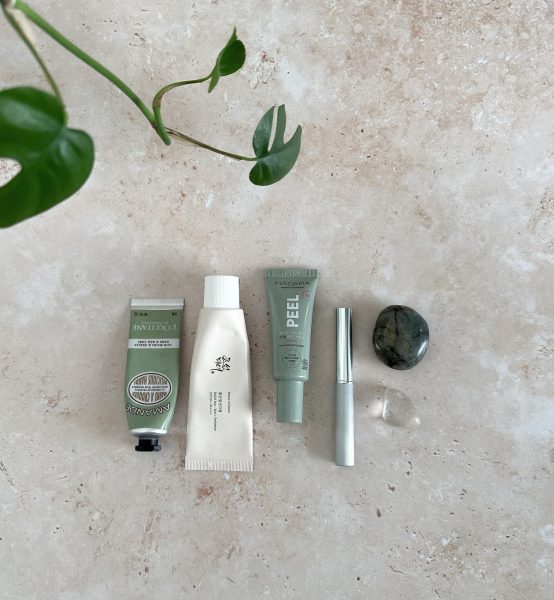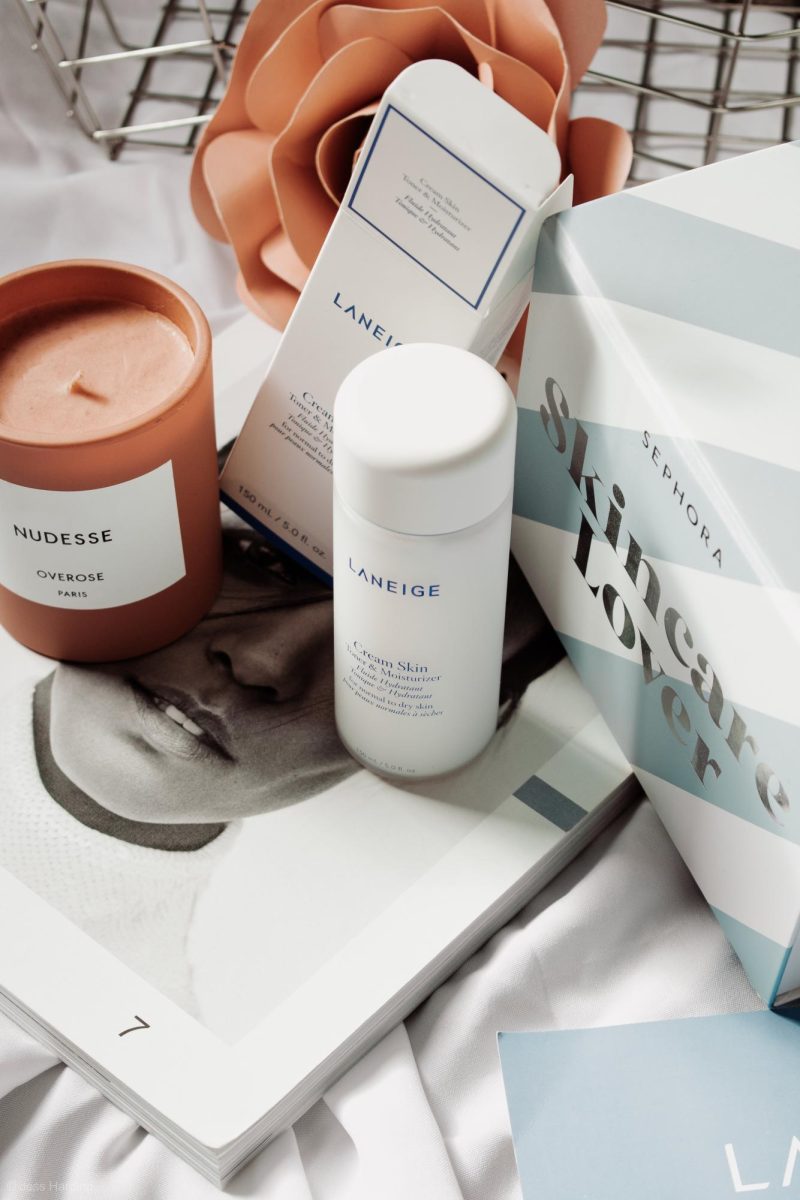As the growing emphasis on looking our absolute best seeps through advertisements and into daily life, Korean skincare has become a holy grail in the beauty industry. From peculiar ingredients to 10-step skincare routines, K-beauty offers prettily packaged serums, oils, and moisturizers to achieve the ever-sought-after “glass skin” look. But what led to the international boom of Korean skincare?
The answer lies in South Korean economic struggles in the late twentieth century.
In fact, the overall growth of Korean culture on the international stage, or Hallyu, can be traced back to the Asian Financial Crisis. In July 1997 to December 1998, Korea, among other countries like Thailand and Indonesia, suffered from a lack of economic stability. Poorly regulated domestic credit growth resulted in an unsustainably high prevalence of doubtful loans and financial leverage. Longstanding pegged exchange rates provided false reassurance for consumers to partake in external borrowing and led to significant exposure to foreign exchange risks. Overheating domestic economies and real estate markets only worsened the situation.
In a three-year Stand-By Arrangement (SBA), the International Monetary Fund, the World Bank, the Asian Development Bank, and governments in the international community allocated a total of $58 billion in a rescue package to alleviate the growing stress on Korea’s economy. In an effort to regain and establish South Korea’s role in the global market, President Kim Dae Jung sought to use the entertainment industry as a vessel for exports. Establishing The Korea Creative Contents Agency and funding the Korean Film Council ushered in a new era of Korean influence in the international economy.
With Hallyu came a booming cosmetic industry. Not only did the South Korean government begin promoting the entertainment industry, but it also began pushing the export of skincare. In fact, the government currently supports the Korean International Trade Association (KITA), a nonprofit group that helps small-to-medium-size Korean enterprises gain entry to overseas markets. Succeeding in the international industry was part of President Jung’s hopes to recover and maintain the country’s economy.
In this effort to encourage Korean companies to focus on exports, the government began to relieve taxes for export-only companies. South Korea has one of the top ten largest global market shares in the beauty market, with an estimated $3.9 billion market size in 2022 and an expected $18.32 billion by 2030. This economic incentive to promote high quality products plays a large role in the success and appeal of K-beauty, as there is more emphasis on catering to the wants of the global market. By creating effective products, these companies bring in revenue that helps contribute to the overall economic status of the country.
Now, a variety of South Korean-branded cosmetics labels line the shelves of Western stores and online marketplaces, with brands like Anua, Beauty of Joseon, CosRX, and Innisfree being praised for their moisturizing and light quality. The allure of these brands mainly stems from the glass skin trend: originating in South Korea and now taking the international skincare world by storm, this phenomenon is widely seen as the ideal of healthy, clear, and luminous glowing skin, without any blemishes or hint of pores.
As opposed to many Western skincare products, which focus on exfoliation, many Korean labels prioritize hydration. For instance, while the Western approach mainly utilizes retinols and exfoliating acids, like salicylic, glycolic, and lactic acid, Korean brands tend to favor gentler ingredients like PHAs (polyhydroxy acids). Able to efficiently exfoliate the skin, PHAs have uniquely larger molecules that allows them to permeate the skin without going too deep and causing irritation. This allows for effective results while protecting the skin barrier, or the outermost layer of the skin.
This reflects Korea’s particular approach to caring for the body: exfoliating properties are balanced with soothing ones to nourish the skin, keeping a light touch while putting products on the skin. “Unlike other products I’ve tried, [the Anua Heartleaf 77% Soothing Toner] actually makes my skin look smooth and bright, while also leaving my skin hydrated,” said Dorothy Jorgji ’24.
Besides PHAs, ingredients used in K-beauty also include various substances extracted from natural sources. Though not for everyone, snail mucin, the substance left behind from a snail trail, is a championed ingredient in Korean cosmetics, with products like the CosRx Advanced Snail 96 Mucin Power Essence Gel receiving acclaim for their calming and hydrating effects. Another popular ingredient in Korean skincare is bee propolis, which is a natural product of bees known to have antibacterial and anti-aging properties.

Many brands even utilize traditional Korean herbal medicine, or hanbang, to enhance their products’ soothing effects. Ingredients like ginseng root, rehmannia, and sacred lotus help heal and replenish the inner body, caring for the body by establishing a healthy foundation and helping prevent problems from arising. The Korean skincare industry evidently boasts a regiment that protects the skin in the long term, utilizing ingredients for their anti-aging and anti-inflammation properties.
Along with its internal components, Korean skincare also offers an appealing price point for those wanting to get into skincare without purging their wallets, which is why many of the current new enjoyers of K-beauty are adolescents and young adults. While there are luxury Korean brands, like OHUI, Sulwhasoo, and Laniege, known for their advanced skin research and emphasis on moisturization, the affordability and convenience of labels like Anua offers something invaluable to those on a budget.
Many beauty content creators on social media platforms like Instagram and TikTok are also promoting South Korean labels. The hashtag #koreanskincare has over 2 billion views on TikTok and over 2.5 million posts on Instagram, with influencers praising certain products for clearing their acne and giving them glass skin.
Other elements of Korean pop culture have also boosted the popularity of the country’s skincare industry, as Hallyu has helped compound various aspects of the country’s culture to help with the growth of each. For skincare in particular, other entertainment industries have promoted the use of products for clear and bright skin, whether it be through direct commercials with Korean pop celebrities or plot points in drama television shows (many K-dramas depict the characters focusing on caring for their skin). By giving consumers of South Korean entertainment examples of their favorite stars using certain products, these brands incentivize viewers to do the same to achieve the unblemished skin seen on their screens.
However, despite the international success of Hallyu, such promotion of beauty products is indicative of an extreme focus on conventional beauty standards. In fact, the “glass skin” trend can be categorized as a mere marketing gimmick as opposed to a truly beneficial standard to hold. New products continue promoting enhanced formulas and convincing consumers to spend more money, fueling the cycle of consumerism. In such an economy, the latest fad is bound to pick up steam, especially with so much advertisement of clear skin and wrinkle-free complexions.
The constant push to look youthful, whether it is through K-pop stars or television shows, encourages the idea that the only way to be seen as beautiful is through piling products upon products to “fix” one’s face. Though skincare can undoubtedly be a form of self-care, the chase for flawless skin can deeply influence impressionable minds, especially adolescents and young adults, as seen with the surge of Korean skincare on Instagram and TikTok.
This consistent push for getting the latest product or following the newest trend begs the question of whether all this is necessary. Buying a 10-step skincare routine to fit into a commercialized beauty standard may be evidence of the extent to which cosmetics companies have succeeded in making money from our obsession with beauty.
Korean skincare may therefore be dismissed as a fad, though this is a one-sided view of the phenomenon. Many of the products have been an effective and affordable option for those seeking to improve their skin.
For treating skin concerns while maintaining soothed skin, Korean skincare is a popular choice for good reason. Although some ingredients may be peculiar and off putting to some, they have brought a distinctive edge to the industry. As K-beauty continues to advance, the future of the consumer world will only be revealed with time.
Though skincare can undoubtedly be a form of self-care, the chase for flawless skin can deeply influence impressionable minds, especially adolescents and young adults, as seen with the surge of Korean skincare on Instagram and TikTok.

